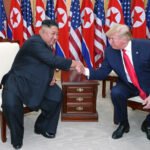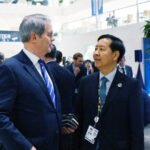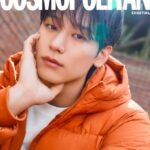LG Innotek at CES 2023
LG Innotek Co., a leading South Korean electronics parts maker, for the first time, is supplying high-performance chip substrates for AI devices to global Big Tech companies.
LG recently passed Big Tech firms’ quality tests for its AI chip substrate, called flip-chip ball grid array (FC-BGA), clearing the last hurdle for product supplies, people familiar with the matter said on Wednesday.
The Korean company will soon begin supplying its FC-BGA products to the unidentified Big Tech companies, sources said. This marks the first time that LG has secured clients since it entered the chip package substrate market in 2022, they said.
LG’s FC-BGA substrates will be used in the graphics processing unit (GPU) for servers, sources said.
(Graphics by Sunny Park)
FC-BGA is a package substrate that transmits electrical signals and power by connecting high-density semiconductor chips to the mainboard. It is mainly used for central processing units (CPUs) and GPUs that require high-performance and high-density circuit connections.
As chipmakers are shifting toward high-density circuit substrates containing more microcircuits to improve system performance, multi-layer substrates like the FC-BGA type are replacing general substrates for electronic components of artificial intelligence, autonomous driving cars and computer servers.
LG TO NARROW MARKET SHARE GAP WITH BIGGER RIVALS
Analysts said LG Innotek will be able to narrow its market share gap with bigger rivals in the fast-growing FC-BGA market.
LG Innotek’s FC-BGA substrate products
Currently, only a handful of companies are capable of manufacturing FC-BGA substrates such as Japan’s Ibiden Co., Shinko Electric Industries Co. of Japan, Taiwan’s Unimicron Technology Corp., and Nanya Technology Corp., Korea’s Samsung Electro-Mechanics Co. and LG Innotek and Austria’s AT&S.
According to Fuji Chimera Research Institute, the global FC-BGA substrate market is forecast to more than double to $16.4 billion by 2030 from $8 billion in 2022.
Samsung Electro-Mechanics, which started the package substrate business in 1991, counts Qualcomm Inc., Intel Corp. and Apple Inc. among its clients.
Apple is sourcing FC-BGA from a limited number of suppliers because the chip package substrate market has high barriers to entry for production technology.
Samsung Electro-Mechanics’ flip chip-ball grid array (FCBGA) substrate for autonomous driving
LG’S HEAVY RELIANCE ON APPLE FOR CAMERA MODULES
LG Innotek is widening its business scope from camera modules to AI chip substrates, advanced driver assistance systems (ADAS) and vehicle lighting to reduce its heavy supplies of camera modules to Apple.
Apple accounted for 77% of LG Innotek’s total camera module sales last year, down from 85% in 2022.
Accordingly, LG’s sales performance has been fluctuating in accordance with the sales performance of iPhones, which use LG’s camera modules.
LG Innotek expects to achieve annual sales of 5 trillion won ($3.6 billion) from non-camera module businesses by 2029.
LG Innotek CEO Jeong Cheol-dong (center) at the FC-BGA factory under construction in Gumi, Korea
LG and its crosstown rival Samsung have been competing head-to-head to gain ground in the global FC-BGA market.
LG Innotek has spent 1.4 trillion won on its FC-BGA business, including acquiring a related factory from affiliate LG Electronics Inc., since it entered the semiconductor package substrate market in 2022.
“We expect to post meaningful sales in our FC-BGA business from as early as August,” said an LG Innotek official.
By Chae-Yeon Kim
why29@hankyung.com
In-Soo Nam edited this article.















